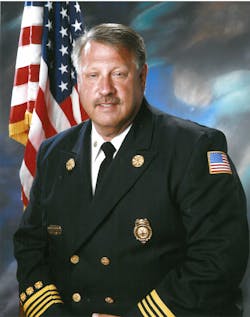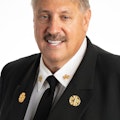Paul Verrochi was a 42-year-old businessman from Boston who knew nothing about ambulances. However, he did have experience building large companies by consolidating smaller companies. Verrochi and his long-term partner had already successfully merged janitorial companies into one large firm and did the same for asbestos-removal businesses.
After selling off those two large companies, they were looking for another industry where they could take their consolidation expertise. One day, Verrochi's banker recommended he look at the ambulance industry, as there were an estimated 2,200 small “mom and pop” ambulance companies that were operating in the United States.
After some research, Verrochi targeted four ambulance companies—two on the East Coast and two on the West Coast—that had the potential to expand their markets. The four companies were purchased, forming American Medical Response (AMR), with headquarters in Boston. The new companies had a total gross revenue of $96 million.
Verrochi went public with the stock for AMR, and the initial public offering raised $23.7 million for additional acquisitions. With this extra cash, Verrochi went on a spending spree in January 1993, buying other ambulance services, such as Mobile Medic Ambulance Services of Gulfport, MS, Ambulance Service Company of Denver, and Buck Medical Services of Portland, OR.
Soon after, other business owners saw what was happening and started acquiring other ambulance companies. Lou Witzeman of Rural/Metro was one such owner. His private company had started running ambulances in 1969, and more than 20 years later, he too got into the merger and consolidation mania in the early 1990s.
Another large company that joined the competition was Laidlaw, which, aside from its school bus and waste management companies, also owned an ambulance company called Medtrans. Other ambulance companies to join the merger mania included such names as Lifefleet and Careline. They all purchased and consolidated small “mom and pop” ambulance companies. AMR purchased more than 200 small ambulance companies alone. These big companies eventually started merging and only three big companies were left at one point—AMR, Rural/Metro and Medtrans.
That’s when things got really interesting. In 1997, Laidlaw bought AMR for $40 per share, or about $1.2 billion, and merged it with Medtrans. The new company used the AMR name and operated in 37 states, with approximately 22,000 employees and 5,000 vehicles. All that was really left after all the consolidations and mergers were Rural/Metro and AMR.
In 2004, Laidlaw sold AMR and its EmCare division to Onex, which formed Emergency Medical Services Corporation (EMSC) as the parent of its two acquisitions. EMSC was later acquired by the private equity firm of Clayton, Dubilier & Rice, which changed the EMSC name to Envision Healthcare and had an initial public offering in August 2013.
In March 2011, Rural/Metro was gobbled up by a private equity firm, Warburg Pincus, for $438 million. While AMR went public with their stock, Rural/Metro remained under the grip of their private equity firm and experienced challenges.
Fast forward to July of this year. AMR announced that they were going to acquire Rural/Metro with the deal to close sometime after October of this year. The deal is subject to regulatory approval and customary closing conditions. What is clear is if the deal goes through, AMR, by best estimates, will now have a footprint on all 50 states.
Now if you’ve been keeping track of all the acquisition, consolidations and mergers throughout this article, you would see that only one big national company is left—AMR. But there could be interesting moves ahead. In the 20-plus years that all this has taken place, the largest provider of private ambulance service in Europe—Falck—also bought ambulance companies and is now operating in the United States. Acadian Ambulance, which covers most of Louisiana, also apparently has plans on expanding and has branched out to Texas and Mississippi. Other private ambulance services, like Priority Ambulance in Tennessee and Community EMS in Michigan, to name a few, are also in expansion mode.
All of this has been interesting to watch, and there are probably more chapters to be written in the future. It is readily apparent that money does drive the private ambulance industry with millions, if not billions, on the table. I wonder if Paul Verrochi would still recognize his old company.
About the Author
Gary Ludwig
GARY LUDWIG has served in three fire departments over his career: St. Louis, Memphis, and Champaign, IL. His fire, EMS and rescue career spanned a total of 46 years, and he has been a paramedic for over 44 years. Ludwig served as president of the International Association of Fire Chiefs in 2019-20. He has a Master’s degree in Business and Management, has written over 500 articles for professional fire and EMS publications and is the author of seven books.
Connect with Gary
Email: [email protected]
Facebook: Gary Ludwig
Twitter: @ChiefGaryLudwig
Website: garyludwig.com

